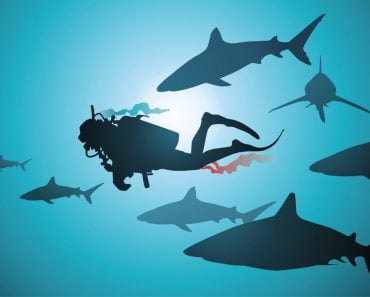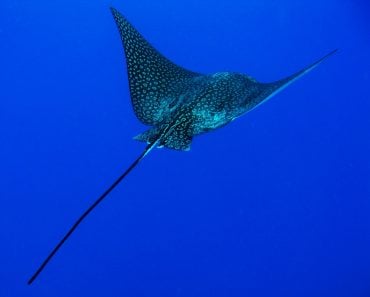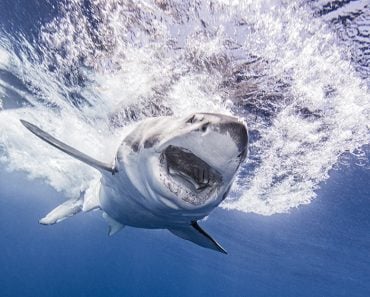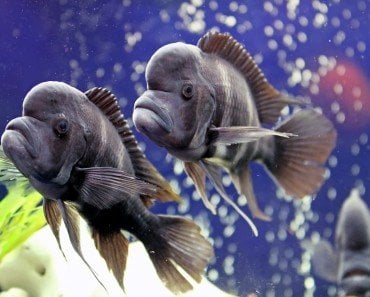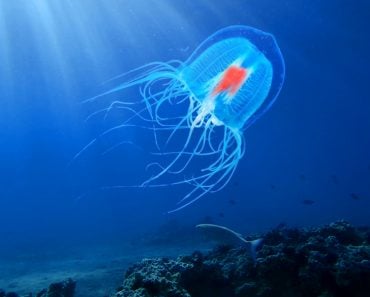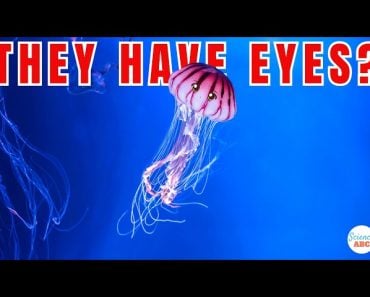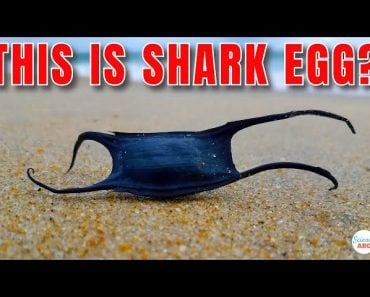Table of Contents (click to expand)
Flipping any species of shark or ray will put the animal in a trance-like state called tonic immobility, during which they become calmer and don’t struggle as much.
We’ve all seen the videos. A shark glides right at a diver, and the diver, cool as a cucumber in a situation where most of us would panic and freeze, gently places their hands on either side of the shark’s snout and either massages or tickles that area. Almost instantaneously, the shark becomes immobilized. Some scientists might even say the shark’s behavior turns catatonic.
Why does the shark respond in this peculiar way?
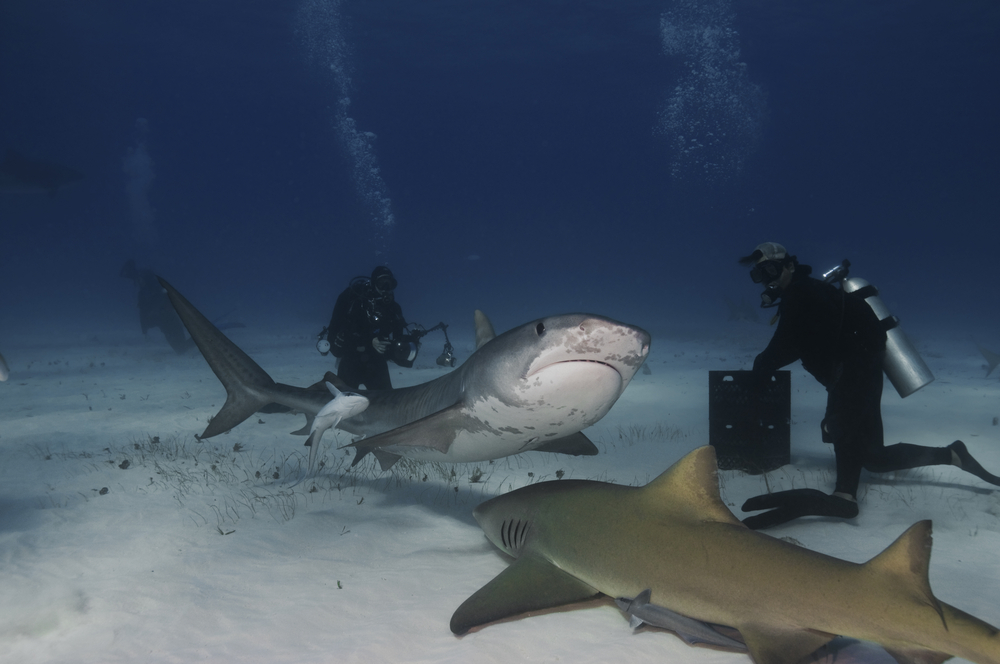
Sharks and rays have the ability to enter an almost trance-like state when the sensory pores clustered on their snout are stimulated. These pores are stimulated by touch, and the relaxed state is known as tonic immobility.
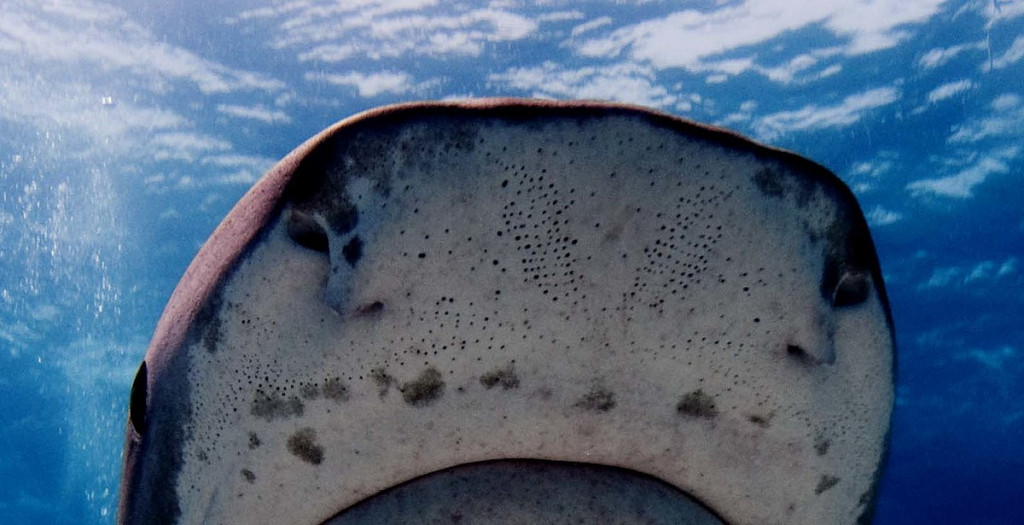
Sharks aren’t the only animals that can be induced into tonic immobility. Many types of animals, ranging from insects to lizards to humans, can be induced into this form of immobility.
Depending on the species, there are many ways to achieve this. In fact, even humans respond with tonic immobility when triggered by the memory of a past traumatic event or when faced with the prospect of dealing with a current traumatic situation.
While handling production animals like chickens or trout, humans rely on tonic immobility to ensure the safety of the handler and the animal. Stroke a chicken’s beak and caress a trout’s belly to immobilize them, respectively.
Recommended Video for you:
What Causes Sharks To Enter Such A State?
Divers and researchers usually stimulate specific pores on the snout of a shark. These pores are called the Ampulla of Lorenzini. They’re an extremely sensitive network of pores that may contain as many as hundreds or even thousands of pores. Each pore opens into a canal lined with hair.
These hairs are similar to the small fuzzy hairs we can observe in our own ears. Each of these canals further leads to a chamber filled with gel. These chambers, called the ampulla, are lined with excitatory nerve cells.
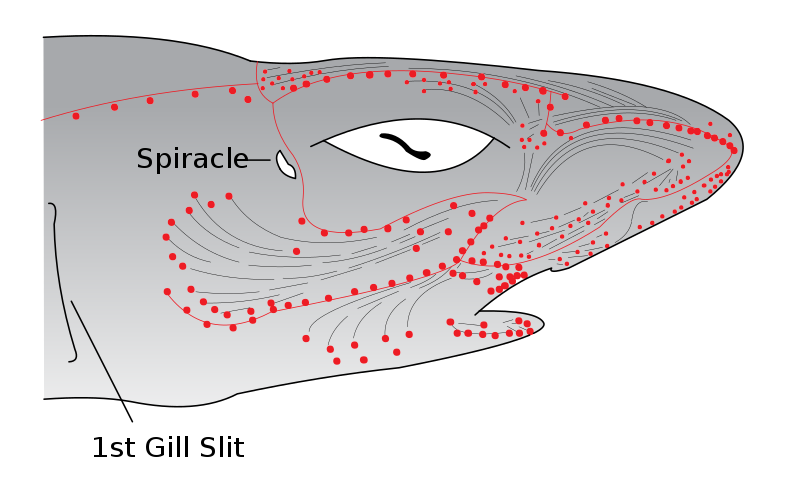
This intricate sensory network gives sharks and rays a lot of additional data about their prey and surrounding environments. The pores allow them to sense temperature, and detect minute stimuli in the surrounding water by using electric fields. In fact, Chondrichthyes as a class are more sensitive to electric fields than any other type of animal in the world.
Muscle contractions produce weak electrical fields that sharks can detect. When animals in the vicinity of a shark move—whether they are prey or a threat, such as a pod of hunting orcas—sharks track the electrical activity to zero in on their location.
However, too much stimulation, such as when their snouts are stroked or tickled, and sharks can go into a paralytic state. Not all species of sharks and rays are equally responsive to the stimulation of these pores. Tiger sharks, for example, are particularly affected by the overstimulation of their electrosensitive pores. Great Whites, however, do not show a similar reaction.
How, then, do researchers ensure they won’t lose a limb while working with great whites? Well, they flip them.
Why Do Researchers Flip Sharks?
It is always easier to handle or study an animal when we can anticipate or ensure their cooperation, but this is easier said than done, especially for wild animals. However, certain sharks and rays do not seem to have as effective of an “off” switch linked to the pores on their snouts.
A shark handler teaches someone how to use tonic immobility to “hypnotize” a Caribbean Reef Shark.
To study these species, researchers must instead flip some sharks on their backs.
Flipping a shark—any species of shark or ray—will put the animal in a trance-like state where they become calm and don’t struggle as much. It’s similar to hypnosis. When in this state, a shark’s muscles relax, and they breathe deeper and more consistently.
This state can last for as long as 15 minutes!
Why Do Sharks Enter Such A State?
There are many theories as to why this effect occurs. Some scientists think it’s a defense strategy, as playing dead or playing possum is an effective way to deter predators.
However, sharks are apex predators. Barring orcas, they have no natural predators, so this theory doesn’t hold much water. Another theory tries to explain it as a mating mechanism, as studies have shown that female sharks are more susceptible to tonic immobility than males.
Surprisingly, orcas seem very aware of sharks’ tendencies to be induced into hypnotic states. In fact, they use tonic immobility against sharks and have incorporated it into their hunting strategies!
In the Farallon Islands in 1997, an orca was observed suffocating a great white shark by holding it upside down for 15 minutes.
A pod of three Orcas hunts down a Great White Shark.
A similar observation was made again in 2000, but this time, it involved a hunting party of orcas chasing down a school of stingrays. The orcas were spotted flipping the rays upside down and paralyzing them before devouring them.
A Final Word
No one really knows why sharks evolved with a mechanism to be induced into immobile states. In fact, as with most species, many theories have been proposed, but conclusive answers are lacking.
Whatever the evolutionary reason, it’s a boon for researchers who study these incredible creatures, as it lets them get up close and personal to collect data. However, it’s also a bit of a curse for sharks when rare predators, such as Orcas, exploit this ability to prey on them!
References (click to expand)
- Henningsen, A. D. (1994). Tonic immobility in 12 elasmobranchs: Use as an aid in captive husbandry. Zoo Biology. Wiley.
- Special Gel Helps Sharks Sense Cold - Scientific American. Scientific American
- Freitas, R., Zhang, G., Albert, J. S., Evans, D. H., & Cohn, M. J. (2006, January). Developmental origin of shark electrosensory organs. Evolution Development. Wiley.


